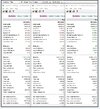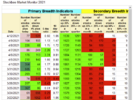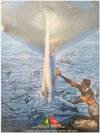- Joined
- 28 December 2013
- Posts
- 6,392
- Reactions
- 24,319
The WTT Strategy is not too shabby
No matter the version you elect to trade, the methodology is solid. Adding a few bells & whistles improves on the original idea. (IMHO)
Is it time for a strategy update?
Strategies can work well until they don't. At times you don't realise there is a problem until it's too late. It's often said, "there is no answer when you can't see the problem".
Like cars, strategies can get a bit old
Sometimes a wash & a polish will get it looking okay, but without the required maintenance, it will soon become unreliable. Sure, any car in decent condition will get you to the supermarket & back but it's another thing to ask that car to win a race at Bathurst.
I've been playing with the WTT Strategy for ages
The WTT strategy in its original form lacks the bells or whistles to be competitive these days even though the methodology is sound. These last few years the returns have been disappointing & patchy. This strategy has been well discussed, thus making it the perfect strategy to use for the example.
Skate.




